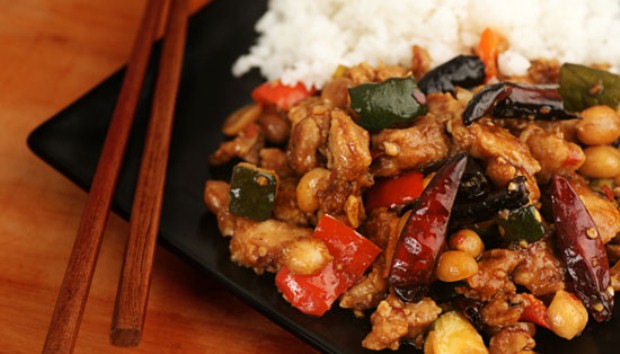If you've ever wondered on the influence it has on Arab culture. Read more…
When I first came to Bahrain from Japan five years ago, one of the first things I noticed in local cuisine was that Chinese food… or better yet… food that is influenced with Chinese origins was prevalent in many of the local take-outs, and it didn’t matter where I went… I could find it. It is not that I have a penchant for Chinese food, but what made me wonder was how did the influence get there? It’s not that I saw many Chinese or Chinese-owned/-managed eating establishments, so I deduced it down to British influences, since the British Empire spanned across the globe, to include many parts of China.

As I traveled to many parts of the Khaleej in the years to come, I saw that it was the same as in Bahrain… Arab people like Chinese food. How about Japanese food? Well… that is a different story all to itself, and besides, it is quite expensive to bring in the ingredients to make authentic Japanese cuisine, and by the way… tempura is actually a Portuguese delicacy that was introduced to Japan in the 15th Century in Nagasaki, Japan and was then “introduced” to the world after World War II with the spread of Japanese restaurants throughout the world; just a little food trivia for all of you Friday brunch-goers.
Back to the Chinese food phenomena, which is also partially due to the contact Arab people have had with China for centuries, something that grew larger when the Arab world expanded due to the spread of Islam. Since taking Islam over three Ramadans ago, I have delved further into how Islam spread. I have researched it from the perspective of an amateur historian, since it is with history, one can get many different perspectives on the same topic. With any expansion, we have exchange of ideas, bloodlines, customs, enlightenment, etc. When Islam spread eastwards to Persia, Islam kept on rolling towards Afghanistan and Central Asia. With the Arab-led expansion of the Abbasid Caliphate to the northeast, Chinese contact was made on a more frequent basis and led to the exchange of embassies and diplomatic ties and trade. As Chinese people of the western parts of China took Islam, their diet also took on “Halal” ways. The exchange of cuisine and different foods was a natural conduit, as Muslims traveled back westwards towards the Middle East.
I really didn’t think much of this until I visited Afghanistan. China is a border country, and all along the borders of Tajikistan, Afghanistan, the Gilgit, Jammu and Kashmir, one will find towns and regions with Arab origin names mixed with Dari and Farsi. It was in Afghanistan that I thought of the Chinese food phenomena again; especially after researching the Arab influences in the region (there were over 60,000 Arab families that settled in the region following the spread of Islam) and after trying to learn Farsi and Dari, I started noticing a lot of words had Arabic origins.
So, next time you sit down to eat some Chinese food from the local take-out, give it a thought… it wasn’t solely a by product of the British experience of the 19th and 20th Centuries, but in fact due to the spread of Islam eastwards and the exchange of ideas, culture, intermarriages and all the things that happen along the way of contact between peoples. It was the Arabs coming back from Central Asia who took brought things with them from the conquests of Islam, as well as the family visits and the wide-open expanse of the Golden Age of Islam that brought Chinese influences westward to spice up Middle Eastern flavors.
BUT… for all I know, it was some guy who hitched a ride on one of the caravans going west who thought to make it big in the Middle East with some plate of spicy sizzling chicken, beef and mutton or pepper steak.
For more writings by Kenji, visit his blog www.kenjidawoud.wordpress.com http://www.kenjidawoud.wordpress.com or contact him at shinobi_me@hotmail.com
By: Kenji Dawoud






